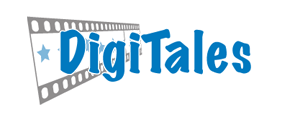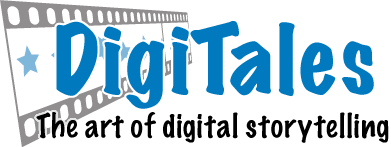Are You Copyright Savvy?
Do you know the copyright guidelines for using digitized media resources? There are a wide range of technologies available to gather and prepare media elements: scanners, Internet sites, digital still cameras, software that allows translating video/music/sound from analog to digital, capturing digital movies, and digitizing voice or music.
Before using any resource, check out copyright and fair use laws, and guidelines for citation of resources. There are ethical considerations as well as legal liabilities in using intellectual property that belongs to someone else. Just because it is on the web and CAN be downloaded doesn’t make it yours any more than scanning or digitizing images or music gives you usage rights.
Understanding Copyright
Any time students are researching, creating digital products, or posting work online, it’s time to include understanding and honoring copyrights. Take time to know and understand copyrights as a teacher – know the difference between Fair Use and Copyright Infringement. Find opportunities to engage students in positive digital citizenship by being responsible users of intellectual property. Design mini-lessons, experiences and situations for students to become savvy about vocabulary; the spectrum of rights; the benefits of the law and processes for respecting the balance of owners and users. Use some of these great resources for copyright clarity:
- Creative Commons: A Spectrum of Rights defines the various possibilities for artists and users between full copyright and public domain
- Creative Commons Copyright Videos provides short clips for understanding how it all works
- Copyright Clarity gives an overview of how Fair Use supports digital learning
- Copyright Kids’ website provides a broad range of resources to foster and support copyright education
- A Fair(ly) Use Tale, A Disney Parody video
- Bound by Law – a free digial comic book translating law into plain English and abstract ideas into ‘visual metaphors.’ The comic’s heroine, Akiko, fends off a cyclopean ‘Rights Monster’ – all the while learning copyright law basics, including the line between fair use and copyright infringement
Education Fair Use Guidelines
Teachers and students will also want to check out Fair Use Chart for a PDF summary chart of the fair use guidelines for classrooms. Only if student work NEVER leaves the classroom walls does the Fair Use Chart apply. IF student work will be distributed outside of the classroom in any way – the school website, multiple copies given to others, or public sharing of any kind – ALL copyright laws will apply ethically and legally. Invest time as you go in documenting (citation) any information sources you use so that you will be ready to develop the credits screens at the end of your story.
Copyright Quiz
How well can you or the kids interpret copyright laws? Ask them to take the Copyright Challenge making time for questions and discussion after the quiz.
Copyright Friendly Searching
Anyone can browse the Web, but usage rights come into play if you’re looking for content that you can take and use above and beyond fair use. Site owners use a licensing “tag” to indicate if and how content on their sites or media can or cannot be reused. Specific search strategies become useful in sorting for specific copyright “useage” type.
- Creative Commons has a great search engine categorized by copyright type for audio, images, video and text resources
- How to Conduct Creative Commons Searches video guides the filtering process for many websites to find resource with specific “usage” rights. Also great advice for determining and citing credits
- Google Advance Search filters for images for “useage rights” including finding ones allowing “reuse”
Permission Forms
One of the most important lessons that we can teach our students about Net-based information is the concept that information is property. It results from hard work and remains the property of its creator unless otherwise clearly indicated or permission is granted by the artist ~ Warlick. Consider having students practice writing letters of permission request – signing permission slips for others to use their work. This experience gives them a two-way view of ethical and legal use of intellectual property rights.
- Permission Forms are needed if working with workshop groups creating digital products that will likely to be distributed beyond the workshop walls. Be sure all “authors” sign permission slips that also ask them to vouch for clearing any copyrights in their digital stories. Students need parent signatures for legal release to share work publicly. Download Workshop Permission Form. Download Student Permission Form.
- Warlick’s Permission Requests to Artists encourages students to request permission to use specific artist’s work including information from websites. Many artists and web authors are willing to rant permission to students for various reports or projects. They are just as willing to have students use web information for their various reports. It is critical, however, that permission be gained from the owner of the information, and that the permission be documented.
Citations
Expect EVERY piece of media and resources used to be fully and accurately cited in all digital works whether using public domain, limited or full copyright. Giving credit to the artist and/or source is a key characteristic of defining positive digital citizen’s habits with ethical and legal practices. Before beginning any media project, define the process and method for collecting-as-you-go citation information. Consider one of the following digital organizing and formating citation tools. Using a citation tool will drastically improve the way students reference other people’s work:
- Bibme – considered best-of-the-best citation tools, visually easy and simple input organizes formatting in any bibliography style. It also has the unique capacity to save along the way with a personal account keeping a database of resources rather than offering a one-time entry as other online tools feature. Teachers can create a class account for all students or allow for individual accounts.
- Tech4Learning’s Citation Maker – used only in real time (no storage) promping for information that will then be formatted in either APA or MLA style for all media. Exports to a variety of file formats.
- Warlick’s Son of Citation Machine – add resources in real time (no storage) with easy online tool for student researchers for all types of resources.

